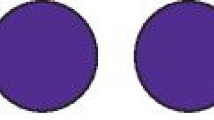Abstract
Design Controlled clinical trial.
Intervention A total of 57 patients were included in the trial, of whom 28 were smokers (who smoked at least 10 cigarettes per day) and 29 were nonsmokers (not defined further). All patients received access flap surgery with no deliberate tissue resection. No antibiotics were used postoperatively and sutures were removed at 1 week. Maintenance care was provided monthly for 6 weeks. Prior to surgery, all patients received conventional nonsurgical therapy. The two surgeons were blinded to smoking status, as were the examiners (number of examiners not given).
Outcome measures Probing depth, attachment level, plaque and bleeding scores.
Results Surgery improved the condition in both groups. A statistically significant greater improvement occurred at initially deep sites (7 mm) in probing depth (PD) and clinical attachment levels (CAL) in non-smokers. Plaque levels were high immediately prior to surgery (Figure 1).
Conclusions Smoking negatively affects the repose to periodontal surgery, at least in initially deep sites.
Similar content being viewed by others
Commentary
This paper reports on a cohort study that evaluate the short-term healing response following periodontal flap debridement surgery in patients with moderate to advanced periodontal disease.
The cohort design is appropriate to address the research question. Exposure was defined as current cigarette smoking of at least 10 cigarettes per day. Occasional smokers were excluded. Whether or not former smokers were part of the group of nonsmokers is not stated. The surgeons performed standardised periodontal surgery and were blinded for exposure status. The outcome measures were assessed in a blinded fashion after nonsurgical periodontal therapy (baseline) and 6 months after flap debridement surgery (FDS). Evaluated outcome measures included mean PD, mean CAL, mean recession depth, and mean proportions of sites with residual PD of 3 mm and CAL gain of 2 mm. A primary endpoint was not specified. Overall, treatment and periodontal evaluation of patients was well designed. Figure 1
The main problem with the study design and/or the report is that the selection criteria for the cohort remain ambiguous. Was this a single or multicentre study? Were consecutive patients enrolled? What were the periodontal inclusion criteria, ie, how was the need for FDS determined? What is the racial/ethnic composition of the study cohort? There is a striking difference between the smoking prevalence in males (74%) and females (27%). Although adjustments for gender were performed, other potentially important confounders were not considered in the analysis, eg particularly surgeon or race/ethnicity.
It is uncertain if and in what direction such adjustments would have changed the estimates. Even if no bias by these or unmeasured confounders was assumed, however, it is not clear to which populations these results could be generalised. We believe that only larger clinical studies allowing adjustments for multiple covariates could contribute new evidence to the area.
Practice point
-
This study suggests a negative effect of smoking on gingival surgery but larger studies/reviews are necessary to clarify the real effect.
Author information
Authors and Affiliations
Additional information
Address for correspondence: Dr. Lenardo Trombelli, Research Centre for the Study of Periodontal Diseases, Dipartimento di Discipline Medico-Chirurgiche della Communicazione e del Compartamento, University of Ferrara, 203 Corso Giovecca, 44100 Ferrara, Italy.
Scabbia A, Cho K-S, Sigurdsson TJ, Kim C-K, Trombelli L. Cigarette smoking negatively affects healing response following flap debridement surgery. J Periodontol 2001; 72:43–49
Rights and permissions
About this article
Cite this article
Dietrich, T., Reichart, P. Smoking adversely affects the response to access flap surgery in patients who have inadequate plaque control. Evid Based Dent 4, 6 (2003). https://doi.org/10.1038/sj.ebd.6400149
Published:
Issue Date:
DOI: https://doi.org/10.1038/sj.ebd.6400149
This article is cited by
-
Smokers have less reductions in probing depth than non-smokers following nonsurgical periodontal therapy
Evidence-Based Dentistry (2005)




